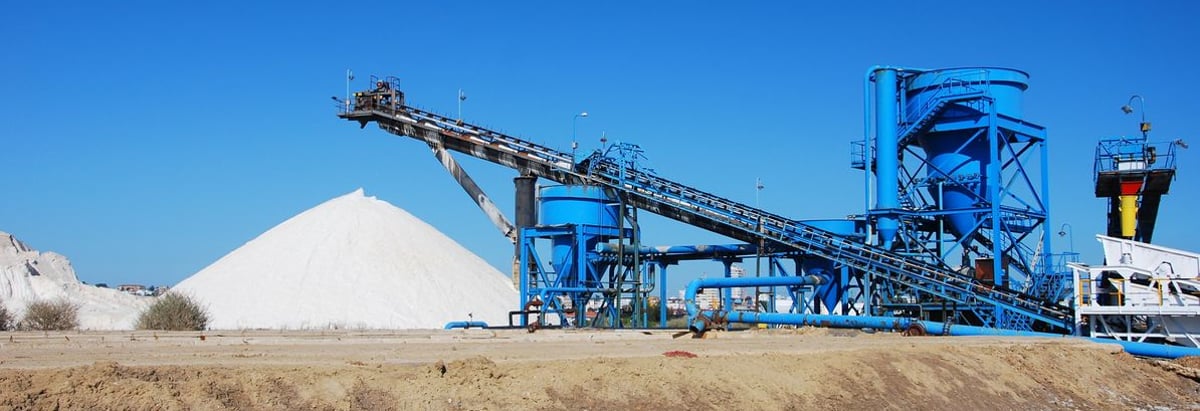
David Iben put it well when he said, 'Volatility is not a risk we care about. What we care about is avoiding the permanent loss of capital.' So it might be obvious that you need to consider debt, when you think about how risky any given stock is, because too much debt can sink a company. Importantly, Mineral Resources Limited (ASX:MIN) does carry debt. But the more important question is: how much risk is that debt creating?
When Is Debt Dangerous?
Debt and other liabilities become risky for a business when it cannot easily fulfill those obligations, either with free cash flow or by raising capital at an attractive price. In the worst case scenario, a company can go bankrupt if it cannot pay its creditors. While that is not too common, we often do see indebted companies permanently diluting shareholders because lenders force them to raise capital at a distressed price. Of course, plenty of companies use debt to fund growth, without any negative consequences. When we examine debt levels, we first consider both cash and debt levels, together.
View our latest analysis for Mineral Resources
How Much Debt Does Mineral Resources Carry?
As you can see below, Mineral Resources had AU$946.6m of debt at June 2021, down from AU$1.01b a year prior. But on the other hand it also has AU$1.54b in cash, leading to a AU$595.5m net cash position.

How Healthy Is Mineral Resources' Balance Sheet?
Zooming in on the latest balance sheet data, we can see that Mineral Resources had liabilities of AU$984.4m due within 12 months and liabilities of AU$1.62b due beyond that. Offsetting these obligations, it had cash of AU$1.54b as well as receivables valued at AU$331.3m due within 12 months. So its liabilities total AU$733.4m more than the combination of its cash and short-term receivables.
Since publicly traded Mineral Resources shares are worth a total of AU$10.4b, it seems unlikely that this level of liabilities would be a major threat. Having said that, it's clear that we should continue to monitor its balance sheet, lest it change for the worse. While it does have liabilities worth noting, Mineral Resources also has more cash than debt, so we're pretty confident it can manage its debt safely.
Even more impressive was the fact that Mineral Resources grew its EBIT by 242% over twelve months. If maintained that growth will make the debt even more manageable in the years ahead. When analysing debt levels, the balance sheet is the obvious place to start. But ultimately the future profitability of the business will decide if Mineral Resources can strengthen its balance sheet over time. So if you want to see what the professionals think, you might find this free report on analyst profit forecasts to be interesting.
Finally, a business needs free cash flow to pay off debt; accounting profits just don't cut it. While Mineral Resources has net cash on its balance sheet, it's still worth taking a look at its ability to convert earnings before interest and tax (EBIT) to free cash flow, to help us understand how quickly it is building (or eroding) that cash balance. In the last three years, Mineral Resources created free cash flow amounting to 5.5% of its EBIT, an uninspiring performance. That limp level of cash conversion undermines its ability to manage and pay down debt.
Summing up
We could understand if investors are concerned about Mineral Resources's liabilities, but we can be reassured by the fact it has has net cash of AU$595.5m. And it impressed us with its EBIT growth of 242% over the last year. So we don't have any problem with Mineral Resources's use of debt. There's no doubt that we learn most about debt from the balance sheet. However, not all investment risk resides within the balance sheet - far from it. Case in point: We've spotted 4 warning signs for Mineral Resources you should be aware of, and 2 of them can't be ignored.
If you're interested in investing in businesses that can grow profits without the burden of debt, then check out this free list of growing businesses that have net cash on the balance sheet.
New: Manage All Your Stock Portfolios in One Place
We've created the ultimate portfolio companion for stock investors, and it's free.
• Connect an unlimited number of Portfolios and see your total in one currency
• Be alerted to new Warning Signs or Risks via email or mobile
• Track the Fair Value of your stocks
Have feedback on this article? Concerned about the content? Get in touch with us directly. Alternatively, email editorial-team (at) simplywallst.com.
This article by Simply Wall St is general in nature. We provide commentary based on historical data and analyst forecasts only using an unbiased methodology and our articles are not intended to be financial advice. It does not constitute a recommendation to buy or sell any stock, and does not take account of your objectives, or your financial situation. We aim to bring you long-term focused analysis driven by fundamental data. Note that our analysis may not factor in the latest price-sensitive company announcements or qualitative material. Simply Wall St has no position in any stocks mentioned.
About ASX:MIN
Mineral Resources
Together with subsidiaries, operates as a mining services company in Australia, Asia, and internationally.
Undervalued with reasonable growth potential.
Similar Companies
Market Insights
Community Narratives




